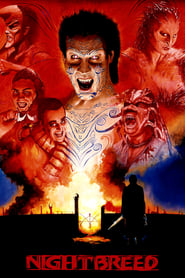
Netsilik Series
These films reveal the live reality of traditional Eskimo life before the European acculturation. The Netsilik Eskimos of the Pelly Bay region in the Canadian Arctic had long lived apart from other people and had depended entirely on the land and their own ingenuity to sustain life through the rigors of the Arctic year. The filming was done during the summers of 1963 and 1964 and in the late winter of 1965 under the ethnographic direction of Dr. Asen Balikci of the University of Montréal, assisted by Guy Mary-Rousseliere, O.M.I., both anthropologists of wide Arctic experience. Quentin Brown was Producer-Director, and Kevin Smith the Executive Producer for the series. A minimum of cultural reconstruction was required during the filming; the Netsilik families readily agreed to live in the old way once more and showed considerable aptitude in recalling and representing the earlier ways of life.
- Overview
- Crew
- Recommendations
Netsilik Series
- Overview
- Crew
- Recommendations
Status
Released
Release Date
Jan 1, 1967
Runtime
10h 30m
Genres
Documentary
User Score
60%
Original Title
Netsilik Series
Production Companies
Education Development Center (E/D/C), ONF | NFB, Documentary Educational Resources
Director
Quentin Brown
Description
These films reveal the live reality of traditional Eskimo life before the European acculturation. The Netsilik Eskimos of the Pelly Bay region in the Canadian Arctic had long lived apart from other people and had depended entirely on the land and their own ingenuity to sustain life through the rigors of the Arctic year. The filming was done during the summers of 1963 and 1964 and in the late winter of 1965 under the ethnographic direction of Dr. Asen Balikci of the University of Montréal, assisted by Guy Mary-Rousseliere, O.M.I., both anthropologists of wide Arctic experience. Quentin Brown was Producer-Director, and Kevin Smith the Executive Producer for the series. A minimum of cultural reconstruction was required during the filming; the Netsilik families readily agreed to live in the old way once more and showed considerable aptitude in recalling and representing the earlier ways of life.
Crew
Recommendations

The Producers

Star

Kedi

Veer-Zaara

Hatchet II

The War Zone

The Swan Princess: Escape from Castle Mountain

Kizumonogatari Part 2: Nekketsu

Gamera the Brave

The Silence of the Sea

Kevin Hart: Laugh at My Pain

The Wrong Man

Star!

Decalogue II

Honey, I Blew Up the Kid

Flodder Does Manhattan!

Night of the Living Dead: Re-Animation
Hello

Welcome Mr. President!
